When starting out with ice skating, the sharpness of your skates can make or break your experience. Here's the deal: blades that are too sharp dig into the ice, making it harder to glide. Dull blades? They’ll leave you slipping and struggling to stop. Beginners need a balance between grip and glide, and this is where the radius of hollow (ROH) comes in. It’s the groove on the blade that determines how sharp or dull your skates feel.
Quick Tips for Beginners:
- Start with a 1/2" or 5/8" ROH: These settings balance grip and glide, making it easier to learn basic moves like stopping and turning.
- Weight matters: Lighter skaters might prefer a deeper hollow (like 1/2") for more grip. Heavier skaters can go shallower (like 5/8") for smoother glides.
- Check sharpness: Use the fingernail test - if your blade shaves a bit of your nail, it’s sharp enough. If it doesn’t, time for a sharpening.
- Sharpen regularly: Most beginners skating 2–3 times a week should sharpen their skates about once or twice a month.
Proper blade sharpness gives you control, builds confidence, and helps you focus on learning instead of fighting your skates. Ready to hit the ice? Let’s dive into the details!
How Ice Skate Blade Sharpness Works
What Blade Sharpness Means
Blade sharpness is all about the two edges created by grinding a concave groove, known as the radius of hollow (ROH), into the blade. This groove forms a curved channel along the blade, allowing the edges to grip the ice and give you control while skating.
Here’s a fun fact: if you can actually see the edge of your blade, it’s probably too dull. This little detail explains why having just the right sharpness is so important, especially for beginners.
Why Sharpness Matters for New Skaters
For those just starting out, blade sharpness can make or break your skating experience. The right sharpness level affects your balance, how quickly you learn, and even your confidence on the ice.
If your blades are too sharp (with a deeper hollow), they might feel “sticky,” digging too deeply into the ice. This can make gliding harder and increase the chances of catching an edge - and let’s be honest, no one likes falling. On the flip side, if your blades are too dull (with a shallow hollow), you’ll struggle with grip, making it tough to stop, turn, or stay balanced. Finding the sweet spot between grip and glide is key. It lets you focus on mastering technique instead of battling your skates.
Weight also plays a role here. Heavier skaters often do better with a shallower hollow to avoid sinking too much into the ice. Lighter skaters, though, might need a deeper hollow to get enough grip for control.
Radius of Hollow (ROH) Basics
The radius of hollow is measured in inches, and knowing these numbers helps you communicate with skate shops about your setup. For beginners, the usual ROH settings fall between 1/2" and 5/8".
- A smaller number (like 1/2") creates a deeper groove, giving you more bite and control but less glide.
- A larger number (like 5/8") results in a shallower groove, which offers better glide and speed but less grip for things like turning and stopping.
Most U.S. skate shops default to 1/2" or 5/8" settings, making it easier for beginners to get started. Here’s a quick guide to help match your ROH to your skating needs:
| Hollow (ROH) | Grip Level | Glide Level | Best For |
|---|---|---|---|
| 3/8" | High | Low | Youth, very light beginners |
| 1/2" | Medium | Medium | Most beginners and adults |
| 5/8" | Lower | Higher | Heavier or advancing skaters |
| 3/4"+ | Lowest | Highest | Speed-focused skating |
The good news? ROH isn’t permanent. You can adjust it every time you sharpen your skates to match your growing skills. As you get more experienced, you might prefer more grip for sharp turns or more glide for those long, smooth strides.
Want to check if your blades are sharp? Try the fingernail test: gently drag your fingernail across the edge. If it scrapes off a thin layer, your blade is sharp. If your nail slides without catching, it’s time for a sharpening. Simple as that!
Best Sharpness Levels for Beginners
Standard ROH Guidelines
If you're new to skating, starting with the right blade sharpness can make all the difference. For kids, a 1/2″ radius of hollow (ROH) is often recommended, while adults typically do better with a 5/8″ ROH. Why? Lighter skaters, like kids, benefit from the extra "bite" that a 1/2″ hollow provides, helping them stay in control. Adults, on the other hand, naturally apply more pressure to their blades, so the slightly shallower 5/8″ hollow helps avoid that over-grippy feeling. Most skate shops in the U.S. stick to these settings to give beginners a solid, reliable start. It’s a great baseline as you work on mastering the basics.
Grip vs. Glide Balance
Once you've got the basics down, understanding the trade-off between grip and glide can help fine-tune your setup. Blade sharpness is like a seesaw: a deeper hollow gives you more grip and control, but it also creates more friction. A shallower hollow, on the other hand, makes for smoother gliding but sacrifices some stopping and turning power. For beginners, finding the sweet spot is essential.
For example:
- A 3/8″ hollow can feel too sticky, creating drag that tires you out.
- A 3/4″ hollow might feel too slippery, making it hard to stop or turn.
Sticking with the standard 1/2″ or 5/8″ ROH is usually the safest bet. Many skaters who’ve switched from a deeper 3/8″ hollow to a 5/8″ report less leg fatigue and better balance during longer sessions. That’s a win-win for anyone just starting out!
What Affects Your Sharpness Choice
While standard guidelines are helpful, personal and environmental factors also play a big role in finding your ideal sharpness:
- Your weight: Lighter skaters often need a deeper hollow for better grip, while heavier skaters can go shallower since they naturally apply more pressure to the ice.
- Ice conditions: Harder ice (common in colder rinks) usually calls for a deeper hollow to maintain grip. Softer ice, on the other hand, works better with a shallower setting to avoid digging in too much.
- Your goals: If you’re working on stops and tight turns, you might want a sharper edge for extra control. If longer, smoother glides are your focus, a shallower hollow will make that easier.
The beauty of skate sharpening is that it’s adjustable. As you get more comfortable and skilled, you can tweak your ROH settings during each sharpening session to match your progress and skating style.
| Skater Profile | Recommended ROH | Why It Works |
|---|---|---|
| Light youth skater | 3/8″ to 1/2″ | Provides extra grip for control |
| Average adult beginner | 5/8″ | Balances control and glide |
| Heavier adult (200+ lbs) | 5/8″ to 3/4″ | Prevents over-gripping |
| Hard ice conditions | Go deeper | Ensures solid grip |
| Soft ice conditions | Go shallower | Avoids excessive digging |
How to Check and Maintain Skate Sharpness
Easy Ways to Check Sharpness
Want to know if your skates are sharp enough? Try the fingernail test. Flip your skate upside down and gently drag your thumbnail along five spots on each edge. If the blade shaves off a thin piece of your nail and feels like it "bites", you're good to go. But if your nail slides off without catching, it’s time for a sharpening session.
Another quick check? Look where the blade meets the ice. Place a coin on the blade - if it tilts or you notice a shiny, uneven line, your edges might be uneven and need attention.
Your skates will also let you know when they’re dull while you’re on the ice. If you’re struggling to turn, stop, or pick up speed - or if it feels like your skates are slipping or “floating” - your blades are probably losing their grip. Once you notice these signs, it’s time to give your skates some TLC.
Basic Care Tips
Taking care of your blades after every skating session is key to keeping them sharp. Here’s a quick routine:
- Dry them off: Use a towel to thoroughly dry your blades right after skating to prevent rust.
- Protect them during storage: Slip on soft, moisture-absorbing blade covers when storing your skates. These help wick away any leftover moisture.
- Use guards off the ice: Always use blade guards when walking on hard surfaces like concrete or rubber mats. But don’t leave hard guards on during storage - they trap moisture and can lead to rust.
- Avoid hard surfaces: Walking on bare blades, even for a few steps, can ruin a fresh sharpening. Stick to ice or use guards.
Lastly, store your skates in a dry spot. Damp bags or car trunks are a no-go - they can trap moisture and cause rust overnight.
How Often to Sharpen Skates
How often you sharpen your skates depends on how much and where you skate. A general rule? Sharpen them every 5–10 hours of skating, but here’s a breakdown to help you plan:
- Beginners skating 2–3 times a week: Sharpen once or twice a month.
- Daily or frequent skaters: Weekly sharpening might be needed.
- Competitive skaters: Every 2–3 hours of ice time to keep performance top-notch.
- Outdoor skaters: Sharpen more often than indoor skaters. Outdoor ice tends to have debris and rough patches that dull blades faster.
Pro tip: Don’t wait until your blades are completely dull. It’s much easier to maintain sharp edges than to restore ones that are too far gone. Keeping your blades sharp ensures you get the right balance of grip and glide, which is especially important for beginners.
| Skating Frequency | Recommended Sharpening Schedule | Notes |
|---|---|---|
| 2–3 times per week (beginners) | Once or twice a month | Track your hours for better timing |
| Daily or frequent skating | Weekly | Keep an eye on edge quality |
| Competitive skating | Every 2–3 hours of ice time | Performance demands sharp edges |
| Outdoor skating | More frequent than indoor | Debris and rough ice dull blades faster |
Skate sharpening: Everything you need to know (2025)
sbb-itb-17ade95
Sharpening Tools, Services, and Snowfeet* Advantages

Once you've mastered basic blade care, the next step is figuring out the best way to keep those blades sharp. The right sharpening tools or services can make all the difference, giving you better control and confidence on the ice.
Common Skate Sharpening Tools and Services
When it comes to sharpening skates, you’ve got two main choices: do it yourself at home or rely on professional services.
- Home Machines: If you're into DIY, machines like the Sparx (priced around $600–$900) and the Wissota 911 (about $800–$1,000) are great options. Sparx is especially popular for its automated system, making it user-friendly even for beginners. Both machines give you precise control over the sharpening process.
- Professional Services: Prefer to let the pros handle it? Professional skate sharpening services cost between $5 and $10 per session. These services ensure your blades are sharpened with the correct radius of hollow for your weight and skill level. They’ll also check for even edges and often provide advice tailored to beginners, helping you get the most out of your skates.
Home Sharpening vs. Professional Services
Each option has its perks, and the best choice depends on your needs.
- Home Sharpening: It’s convenient and can save money in the long run if you’re sharpening skates frequently. But, keep in mind, the upfront cost of a machine is significant, and there’s a bit of a learning curve.
- Professional Services: These guarantee expert results and are perfect for beginners who might not yet know how to properly maintain their blades. Plus, you’ll get personalized guidance. The downside? You’ll need to work around shop hours and pay for each session.
For beginners, starting with professional sharpening is often the safest bet. Once you’re more experienced and confident, investing in a home machine could be a smart move.
Snowfeet* vs. Standard Winter Sports Gear
Let’s switch gears and talk about Snowfeet*. These compact, lightweight attachments for your winter boots are shaking things up in the world of winter sports. Think of them as mini-skis, but without all the hassle of traditional gear.
- Low Maintenance: Unlike ice skates, skis, or snowboards that need regular tuning and sharpening, Snowfeet* are super low-maintenance. Their shorter blades can be touched up with basic hand tools, so you don’t need any fancy equipment or professional help. This makes them ideal for beginners who want to focus on having fun instead of worrying about upkeep.
- Portability: Snowfeet* are a dream for anyone tired of lugging around bulky skis or snowboards. They fit easily into a backpack, making them perfect for spontaneous adventures.
- Affordability: With prices ranging from $250 to $775 depending on the model, Snowfeet* are generally more budget-friendly than traditional ski or snowboard setups, which can easily top $1,000.
Here’s a quick comparison to highlight the differences:
| Feature | Snowfeet* | Standard Skis | Snowboards | Ice Skates |
|---|---|---|---|---|
| Sharpening Required | No | Yes (professional) | Yes (professional) | Yes (regular sharpening) |
| Portability | Fits in a backpack | Bulky, needs transport | Bulky, needs transport | Moderate |
| Learning Curve | Easy, quick setup | Requires lessons | Requires lessons | Moderate |
| Beginner-Friendly | Extremely beginner-friendly | Moderate | Moderate | Moderate |
Snowfeet* are a game-changer for anyone looking for a fun, beginner-friendly, and low-maintenance way to enjoy the snow. No sharpening worries - just strap them on and glide!
Tips for Better Learning
Sharpening your blades properly and keeping up with routine maintenance can make a big difference in your early skating journey. Once you've got the sharpening basics down, these tips will help you fine-tune your practice and avoid common pitfalls.
Start with the Right Hollow
If you're just starting out, stick with a hollow between 1/2 inch and 5/8 inch. Why? This range strikes a good balance between grip and glide, making it easier to learn key skills like stopping, turning, and staying steady on your feet. A deeper hollow, like 3/8 inch, might give more grip, but it can also feel "sticky" and less stable for beginners.
Most skate shops set beginner skates to a 1/2 inch or 5/8 inch hollow by default, so you're already in the right zone. Keep these settings until you're comfortable with basic movements. Once you’re feeling more confident, you can experiment with slight adjustments. For instance, if you want a bit more grip or a smoother glide, tweak your hollow gradually - don’t jump straight to 3/4 inch.
Must-Have Maintenance Gear
Blade guards are a must-have for any skater. They protect your blades from damage when you're walking off the ice. Without guards, walking on hard surfaces like concrete can dull your blades quickly, which will affect your skating performance.
Another essential habit? Dry your blades with a cloth after every session to prevent rust. It’s simple but makes a big difference.
Investing in a basic maintenance kit can save you a lot of trouble. Kits like those from Snowfeet* often include handy tools like a honing stone for quick touch-ups, a screwdriver for tightening loose screws, and cleaning supplies. These kits are compact, so you can easily stash them in your skate bag. Unlike the more complex care required for skis or snowboards, skate maintenance is straightforward, and having these tools on hand means you can deal with small issues before they turn into bigger problems.
Common Beginner Mistakes to Avoid
Here are a few common missteps to watch out for:
- Skating on dull blades: Use the fingernail test to check your blades. If your nail doesn’t catch when you lightly drag it across the edge, it’s time for a sharpening.
- Walking without blade guards: Always put on your guards before stepping off the ice, and don’t take them off until you’re back on the rink.
- Skipping regular sharpening: If you skate 2–3 times a week, aim to sharpen your blades once or twice a month. Don’t wait until they’re completely dull.
- Not drying blades: Rust can creep in fast if you don’t dry your skates after each session.
- Making drastic hollow changes: If you’re struggling with stopping or turning, it’s likely a technique issue, not a blade problem. Consider working with an instructor or experienced skater before adjusting your hollow settings.
If you skate outdoors, keep in mind that outdoor ice is harder and can wear down your blades faster than indoor rinks. Regular checks and more frequent sharpening will help keep your skates in top shape for outdoor sessions.
Finding the Right Balance for Beginners
When you're starting out with skating, getting the blade sharpness just right is key. It’s all about finding that balance between control and confidence. If your blades are too sharp, they’ll grip the ice too much, making it harder to glide smoothly. Too dull, and you’ll find yourself slipping all over the place. A moderate hollow gives you that sweet spot - enough grip for stability and just the right glide to keep things smooth. This balance makes skating safer and more enjoyable, so you can focus on learning instead of fiddling with your gear.
Products like Snowfeet* take a lot of the guesswork out of this process. They’re designed to hold their sharpness longer, which means fewer trips to the skate shop. Plus, many models are easy to maintain at home - perfect for beginners who want to spend more time skating and less time worrying about upkeep. This consistency helps you build skills without distractions.
Starting with the right blade sharpness naturally boosts your confidence. When your skates behave predictably - gripping when you push off and gliding when you coast - you’ll feel more in control. That steady performance helps you progress faster, enjoy the process, and reduce the chances of falls.
As you improve, your sharpening needs might change. What feels perfect during your first few sessions could feel too limiting once you’re nailing basic turns and stops. A good starting point is a 1/2 to 5/8 inch hollow. From there, you can adjust as you gain experience. Regular maintenance is also important to keep your blades performing consistently and safely.
FAQs
How does the radius of hollow (ROH) affect beginner skaters?
The radius of hollow (ROH) is a big deal when it comes to how your skates perform. It’s all about finding the right balance between grip and glide, which is especially crucial if you’re just starting out. Here’s the gist: a deeper ROH (a smaller number) gives you more grip. That extra grip can help you feel more in control when turning and make it easier to pick up speed quickly. But there’s a trade-off - it can cut down on your glide and overall speed.
On the flip side, a shallower ROH (a larger number) is great for smoother, faster gliding. The downside? You won’t get as much grip, which can feel a bit shaky if you’re new to skating.
If you’re a beginner, a middle-ground ROH is often the way to go. It gives you a nice mix of control and smooth movement without leaning too far in either direction. To nail the perfect ROH for you, chat with a professional skate sharpener - they’ll help you figure out what works best. And don’t forget to keep your skates in good shape with regular maintenance for the best experience out there on the ice!
How often should I sharpen my ice skates based on how often I skate?
The perfect skate sharpening schedule depends on a few things: how often you hit the ice, the rink conditions, and your skating style. A solid rule of thumb? Sharpen your skates after about 12 hours of ice time. But keep in mind, this isn’t set in stone. If you’re skating three or more times a week, aiming for a sharpening twice a month is a good place to start.
Other details, like your weight and the quality of your blades, can also play a role. If you feel your skates slipping or notice you're losing grip, it’s a clear sign they need some attention. Regular sharpening isn’t just about keeping your skates in top shape - it’s about giving you better control and a smoother ride on the ice, which is especially helpful if you’re just starting out.
What makes Snowfeet* better than traditional ice skates for beginners?
Snowfeet* brings some real perks to the table, especially if you're new to skating. Unlike traditional ice skates, these are super compact and lightweight, making them much easier to handle. Because of their design, they offer better control and stability, which can help beginners get the hang of things faster and with more confidence.
What’s also great is how versatile they are. You can use Snowfeet* on both snow and ice, giving you more options for where to practice. Plus, they require less upkeep than standard skates, which means less hassle and more time enjoying the ride. If you're looking for a simple, stress-free way to start skating, Snowfeet* might just be the perfect fit.







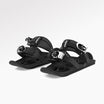
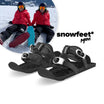
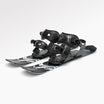
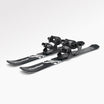

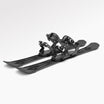

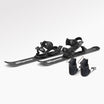






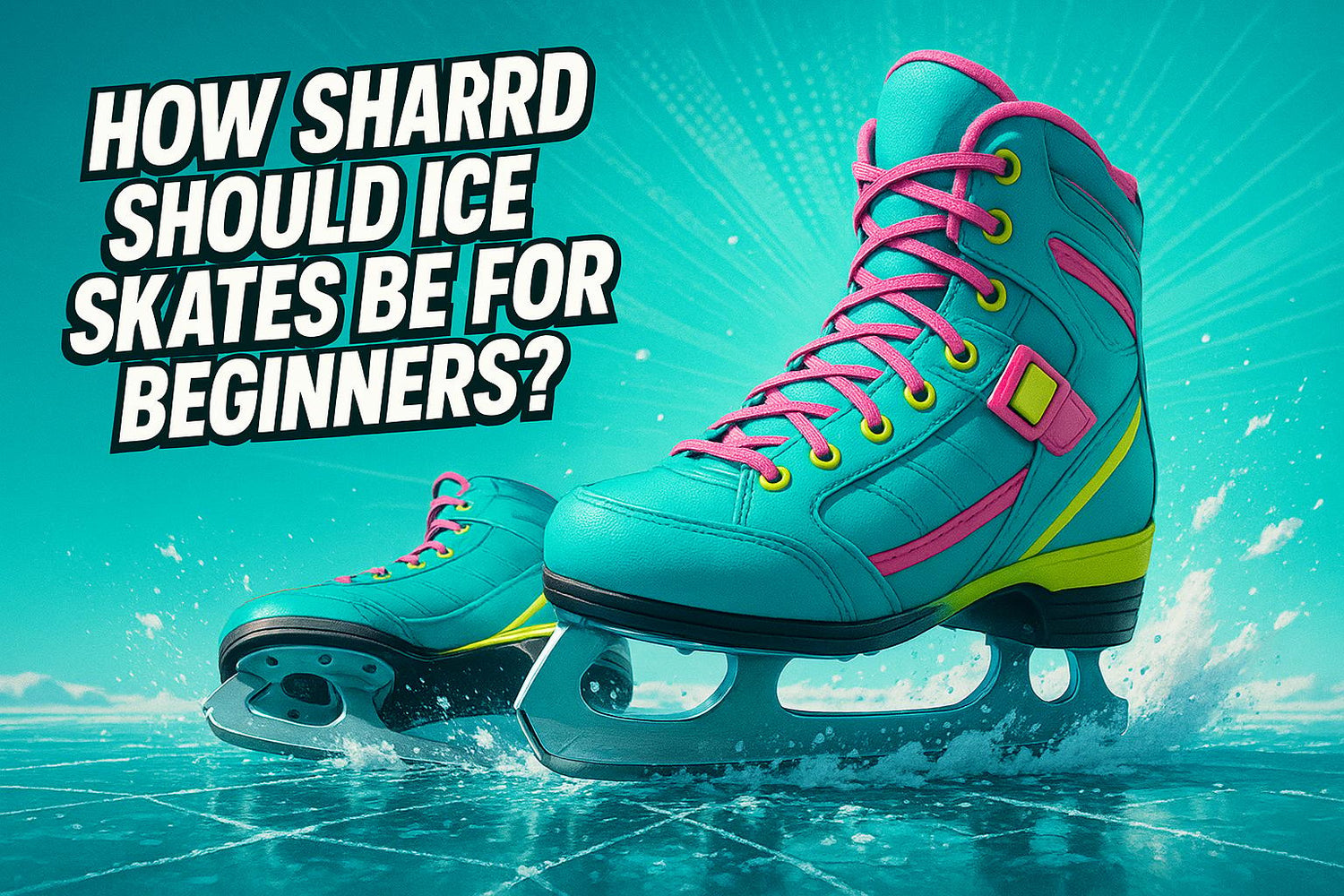

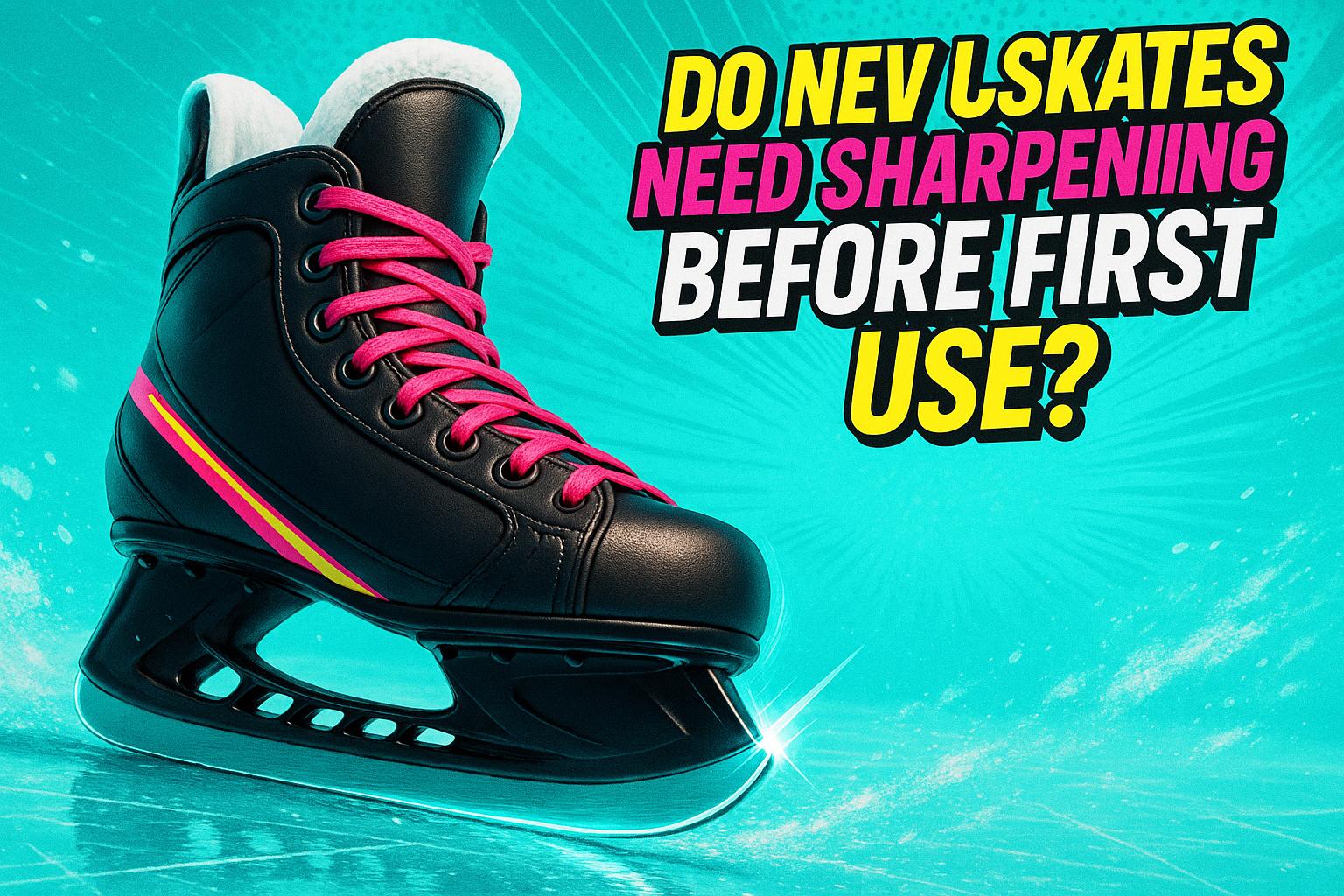




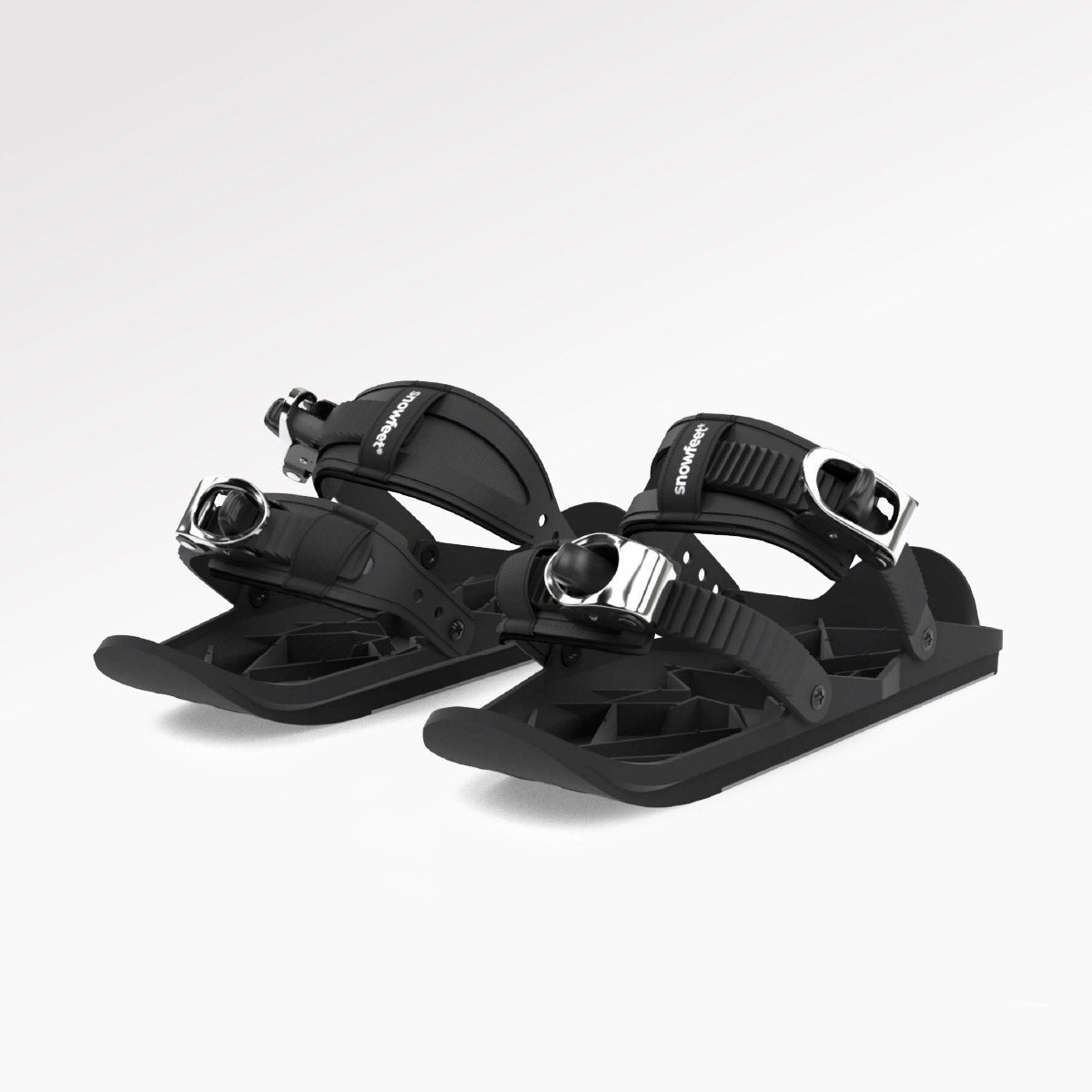
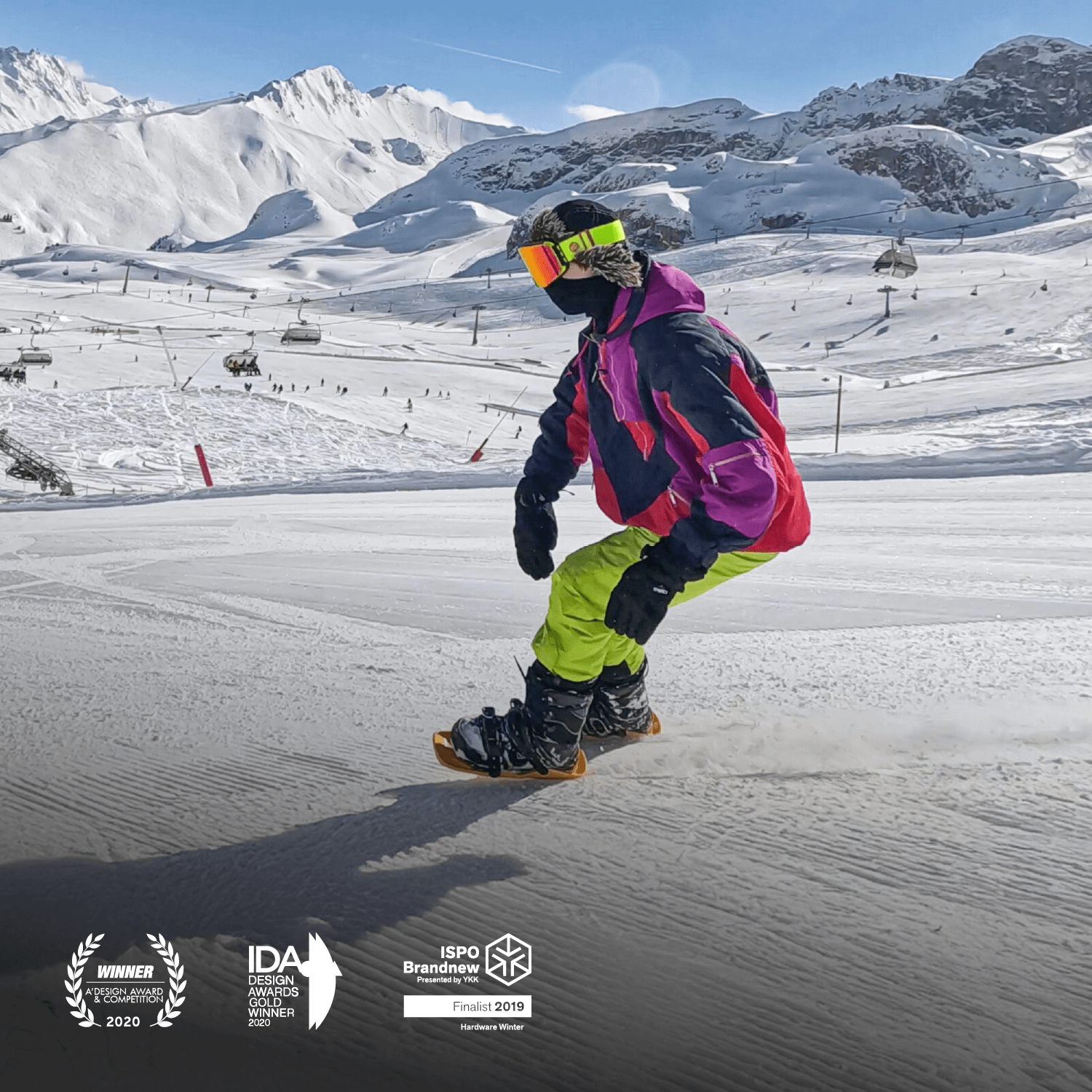
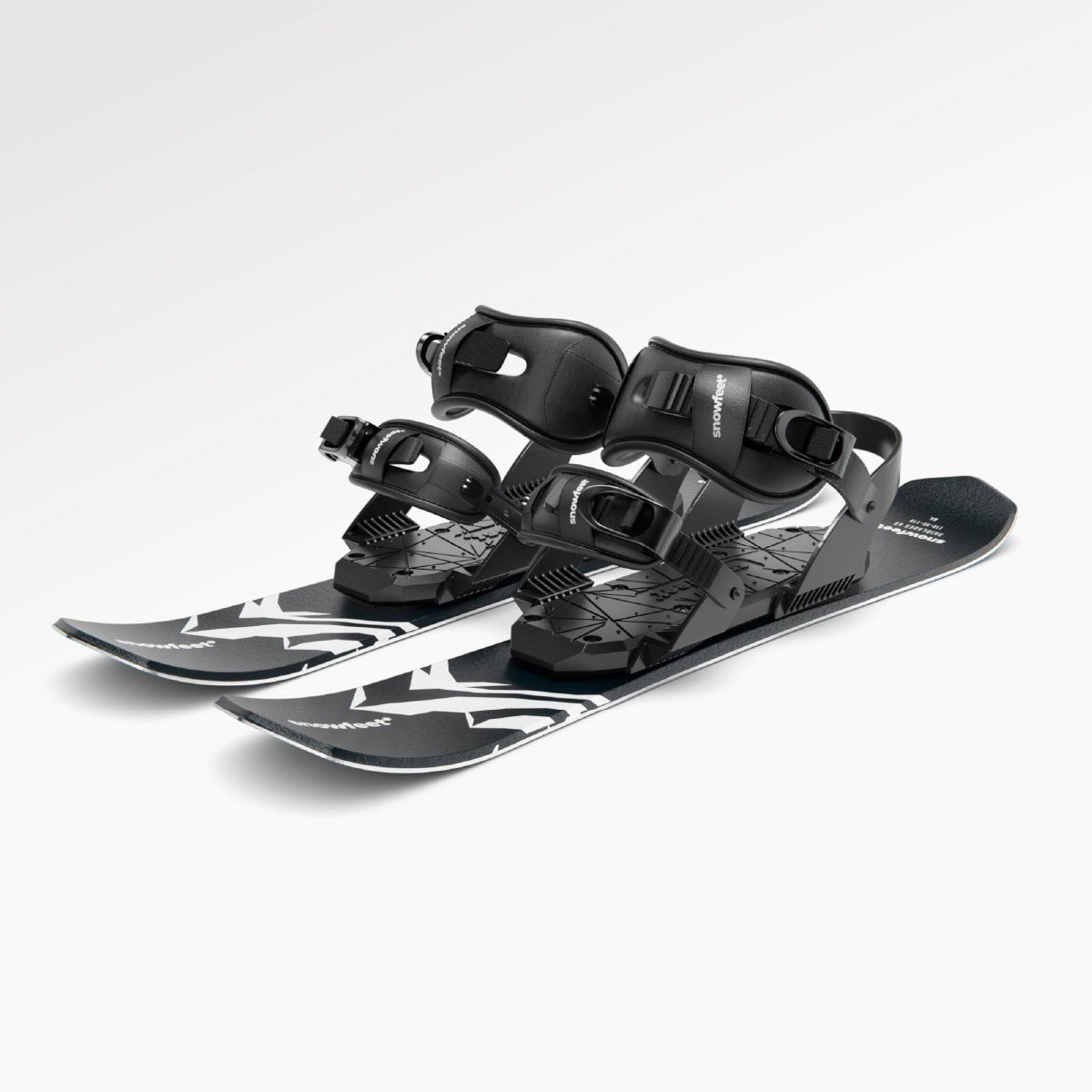

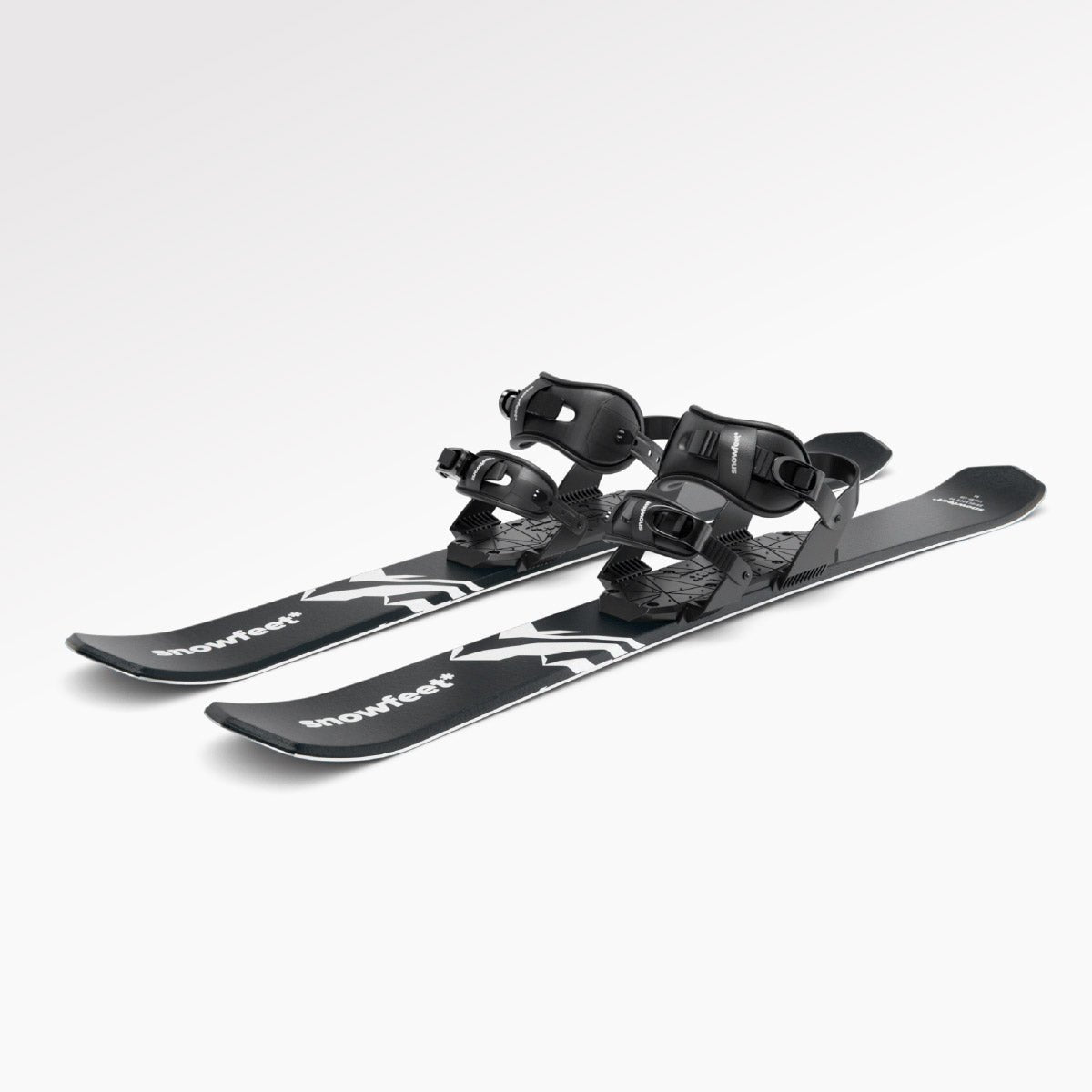

Laat een reactie achter
Deze site wordt beschermd door hCaptcha en het privacybeleid en de servicevoorwaarden van hCaptcha zijn van toepassing.